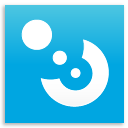(Media) Authoring
Open source syntax and tools are preferred.
Technical documents
Random documents tend to get stale and forgotten after a while and sometimes even lost.
Consider writing information in a project’s README or any other file
referenced from that README so it’s close to the code. Second-best
alternative is a project’s GitLab wiki.
More on documentation
Non-technical documents
These are generally only written for clients.
We tend to strike a balance between using open source formats and having a high probability this client can open such documents.
-
If the other party is not expected to modify or track changes between revisions, PDF is great.
-
Otherwise, OpenDocument documents are preferred:
- OpenDocument Text,
.odt - OpenDocument Spreadsheets,
.ods - OpenDocument Presentations,
.odp
- OpenDocument Text,
When in doubt, check software support.
Signing
In the EU, a valid signature is defined in the eIDAS regulation. An electronic signature is defined as “data in electronic form which is attached to or logically associated with other data in electronic form and which is used by the signatory to sign”. Thus, something as simple as writing your name under an e-mail might constitute an electronic signature.
Redacting
To redact (make parts unreadable) from a PDF, use the following steps:
- Open the PDF in a graphical editor like Gimp (quality settings
300 pixels/in), use the “smudge tool” to make parts unreadable. Export as PDF again: “notreallyredacted.pdf” - Now rasterize the PDF so objects are not just hidden under a black rectangle but actually gone:
convert -quality 100 -density 360 -compress zip notreallyredacted.pdf trulyredacted.pdfDrawing and design
Penpot (web based) is the tool to create wireframes and visuals in for all of our new apps and websites. It allows collaboration between designers and developers. While being a modern tool that’s accepted by both designers and developers, the other important property is that we don’t get locked into a specific tool for creating and updating visuals like earlier was the case with Sketch (requires Mac) and Figma (requires additional licenses).
Useful plugins for Penpot:
Raw material like video, sounds and other less structured blobs can best be put on Next Cloud.
Legacy and temporary applications
For many designs in the past we’ve used Sketch. As the tool is Mac only, it’s not very inclusive. All of these designs are migrated to Figma. Figma offers a desktop app and web version, so both designers and developers can use it. Figma has a good Sketch importer, Penpot doesn’t, so that’s why old designs are moved from Sketch to Figma.
For old designs that are not in active use anymore, we’ll wait for Penpot to gain a good Figma or Sketch importer one day. For old designs that we still actively use, we can decide to take on the extra work of migrating the design to Penpot.
Web(app) mockup tools
mydraft is open source and has a live editor to easily create mockups of websites.
Diagrams
Mermaid is a great tool and syntax to create all kinds of diagrams. Flowcharts, sequence diagrams, class diagrams, Gantt charts, Entity Relationship Diagrams, and so on. Mermaid live is a live editor of the Mermaid syntax.
PlantUML is the acceptable alternative. It has more diagram types, like a mind map.
The above syntaxes are promoted for these reasons:
- You define graphics by writing text, making the diagrams easy maintain.
- GitLab renders the graphs when syntax is embedded in Markdown or reStructuredText.
If you don’t need fancy diagrams, there’s always plain old ascii art.
Video
For creating video pitches, these are helpful tools: Use Gnome’s Cheese for recording video. If you have written a script, you can use CuePrompter to keep looking in the camera while pitching.
For recording screencasts, OBS Studio is unbeatable.
After that use the OpenShot Video Editor for editing the video.
